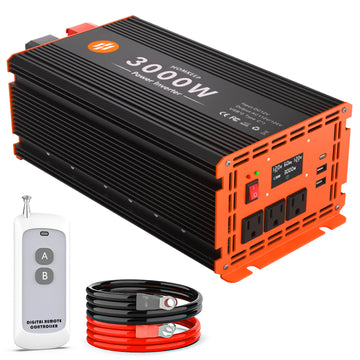The kWh to Watts Calculator is designed to help you easily convert kilowatt-hours (kWh) to watts (watts) of average power. Whether you're a home user wanting to see how much energy your electrical equipment uses, or a professional needing to estimate and plan for an electrical project, this calculator will meet your needs. With simple inputs, you get intuitive power conversion results, making power calculations quick and easy.
kWh to Watts Calculator
Enter kWh consumed:
kWhEnter hours over which the kWh was consumed:
hoursAverage Power (Watts): 0
How to Convert Kilowatt-Hours to Watts
A watt (W) is a measure of power, while a kilowatt-hour (kWh) is a measure of energy equivalent to 1,000 watt-hours, or 1,000 watts of power for 1 hour. So, to convert kilowatt-hours to watts, multiply the energy in kilowatt-hours by 1,000 to find the energy in watt-hours, then divide by the time in hours.
kWh to Watts Formula
Use this formula to convert watts to kilowatt-hours:
P(W) = E(kWh) × 1,000/T(hrs)
Thus, the power P in watts is equal to the energy E in kilowatt-hours times 1,000, divided by the time T in hours.
Calculators in the field of solar power generation
System design and planning: Calculators are used to estimate the amount of electricity to be generated by a solar system, which usually involves converting the amount of solar radiation (in kWh/m²/day) into the amount of electricity that the system is likely to produce. It is also necessary to take into account the efficiency of the solar panels, system losses, etc.
Economic analysis: A calculator evaluates the return on investment (ROI), payback period and other financial indicators of the solar system. This usually involves converting the electricity generated by the solar system into savings on electricity bills or subsidies received and comparing it to the initial investment cost of the system.
Performance Monitoring: During the operation of the solar system, a calculator is used to track and compare the actual power generation of the system with the expected power generation so that potential problems can be identified and resolved in a timely manner.






